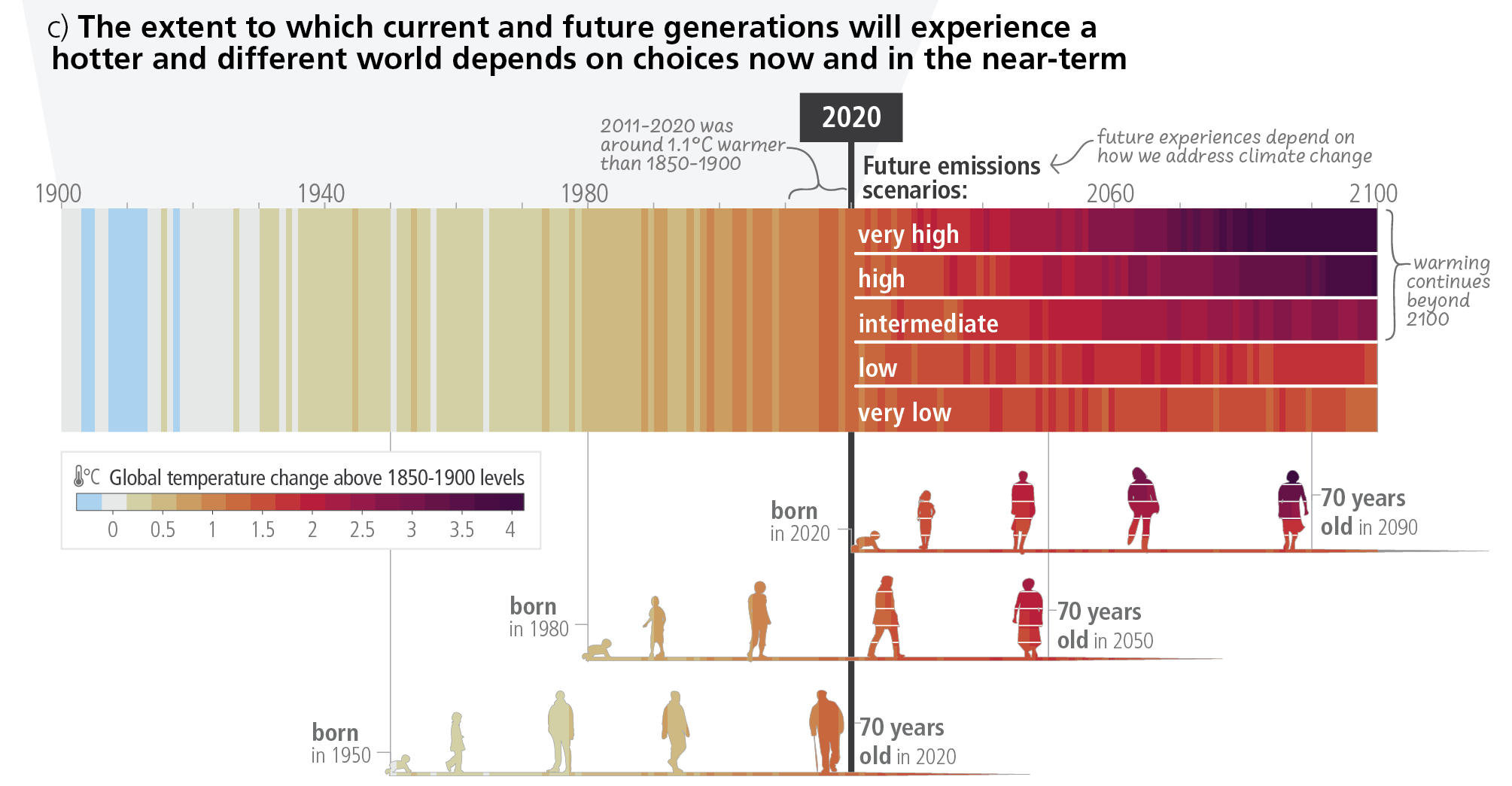Following the Intergovernmental Panel on Climate Change’s release of the AR6 Synthesis report on 20 March, social media and the press were full of one particular quote: “There is a rapidly closing window of opportunity to secure a liveable and sustainable future for all”.
This statement is stark. Not only because of its urgency, but for its choice of words. If all we are looking for is a liveable future, what are we consigning our children to? The question does need to be asked if this quote actually reflects the entirety of the report. Or is there more to be learned from reading it?
Getting to the heart of the matter
There are two powerful figures in the report which sum up the findings. The first is the “burning embers” chart, more specifically Figure SPM.4: “Subset of assessed climate outcomes and associated global and regional climate risks”. This figure contrasts the findings included in the AR6 report with those presented in AR5. It is worth noting that AR5 was published in 2014. It is the scientific basis that underpinned global agreement on the Paris Agreement in 2015.
This chart shows us what science has learned about climate change in the interim 8 years. It shows that impacts will occur earlier than previously predicted. In other words, given that action has been too slow, we will experience far more significant impacts from climate change.
What this chart demonstrates is that even if we meet the goals of the Paris Agreement life will only be “liveable”, it will not be prosperous or abundant. This is borne out very clearly in Figure 1 “Adverse Impacts from human-cause climate change will continue to intensify”. This picture which indicates how people born in different decades will be impacted by climate change as a function of how well we deliver emissions reductions.
The lives of children born this decade will be significantly impacted by the effects of climate change.
Stepping up the pace of action: messages for business
In the global commentary on the synthesis report there have been increasing indications that we will reach net zero globally by 2050 or 2060. However, we are not going to get there quickly enough. Net zero as a concept needs to consider both the end point but also the path taken to get there. Greenhouse gas emissions are cumulative, as an engineer I always think of the area under the curve. This is what matters in limiting global climate change. We need to keep the area under the emissions curve small enough to ensure that global climate change is not completely destructive. Another quote from the report that we need to invoke is: “Limiting warming involves rapid and deep, and in most cases, immediate greenhouse gas emissions reductions in all sectors this decade.”
The Synthesis Report not only summarises the work of the climate scientists, it includes the work on emissions reduction pathways, technologies, and policy to enable the necessary emissions reductions. This part of the report is more tempered, and even optimistic in places. The other quotes from the report that should be remembered are: “Feasible, effective, and low-cost options for mitigation and adaptation are already available” and “Accelerated climate action can also provide co-benefits”.
While these are not new concepts, reiterating these sentiments in globally accepted documents does mean that they carry more weight. There are a number of themes in the document that give business an indication of the territory going forward.
-
There are tried and tested technology options already available. Don’t wait for innovation to deliver a silver bullet, implement available technologies now.
-
Look for the options and solutions which can be scaled quickly and applied widely, this will enable momentum to build in systems.
-
Fairness needs to be part of all solutions, consider stakeholders, remembering that natural systems are also stakeholders, and look for outcomes that limit negative results.
-
Solutions need to be robust. They need to take into consideration diverse contexts. The world in which your business will be operating is going to change, test your solutions to make sure they are not self-limiting, or could lead to perverse outcomes.
-
From a policy perspective focus should be on removing barriers to implementation and change.
These points all indicate that a systems approach needs to be taken to assessing alternatives and driving change. Options should not be assessed in isolation, but rather as part of a much larger and more complex whole, as we unite for 1.5oC.
The final quote that we need to remember is: “Our choices will reverberate for hundreds, even thousands of years.” We need to take action and we need to be bold.
Related insights
-
Decarbonising Australia's economy As climate policy takes shape, can business maintain its constructive stance?READ MORE -
Policy and legislation Access to credit may depend on what your bank thinks of your climate riskREAD MORE -
Climate risk Experts warn: current approaches to assessing physical climate impacts are flawe…READ MORE








